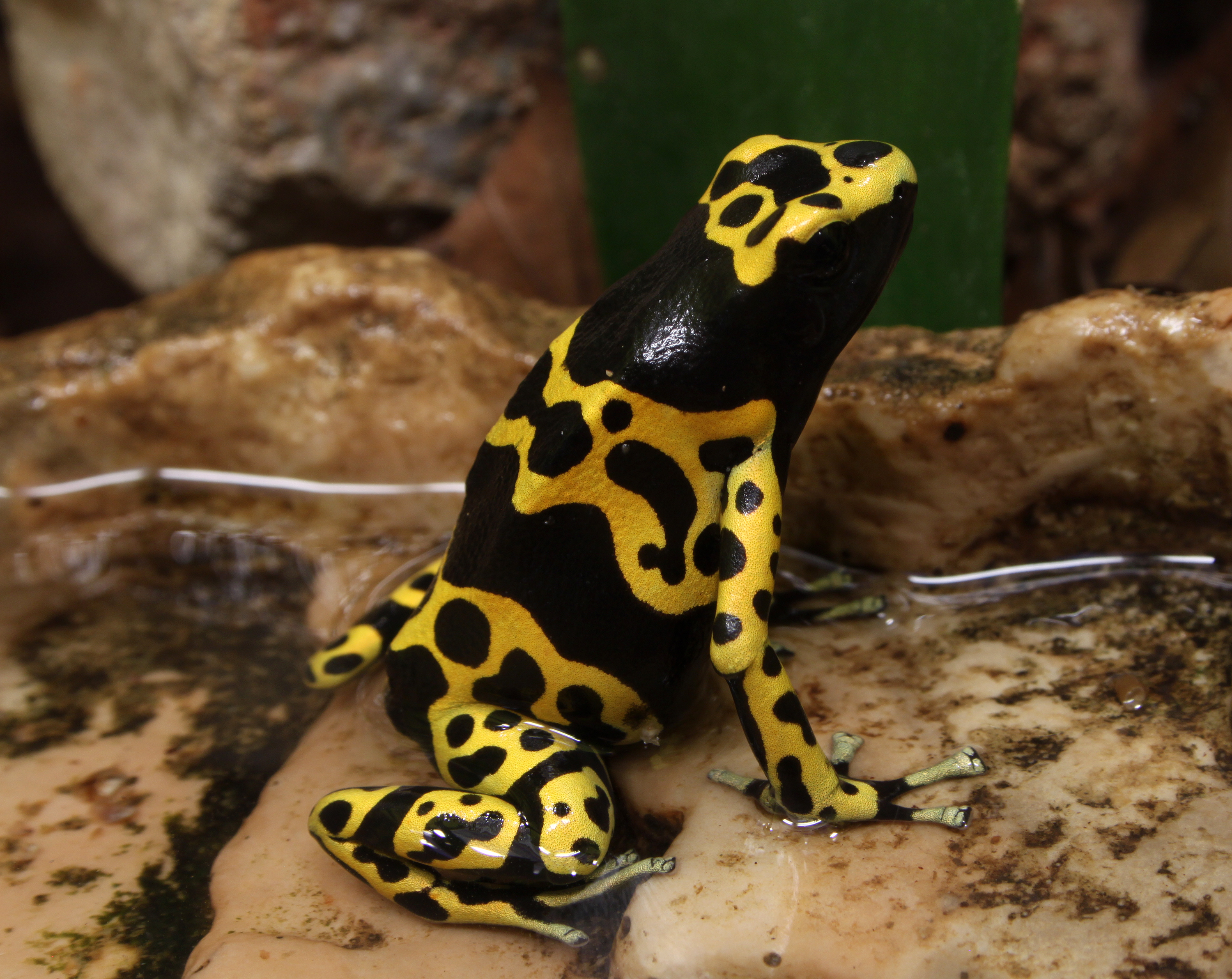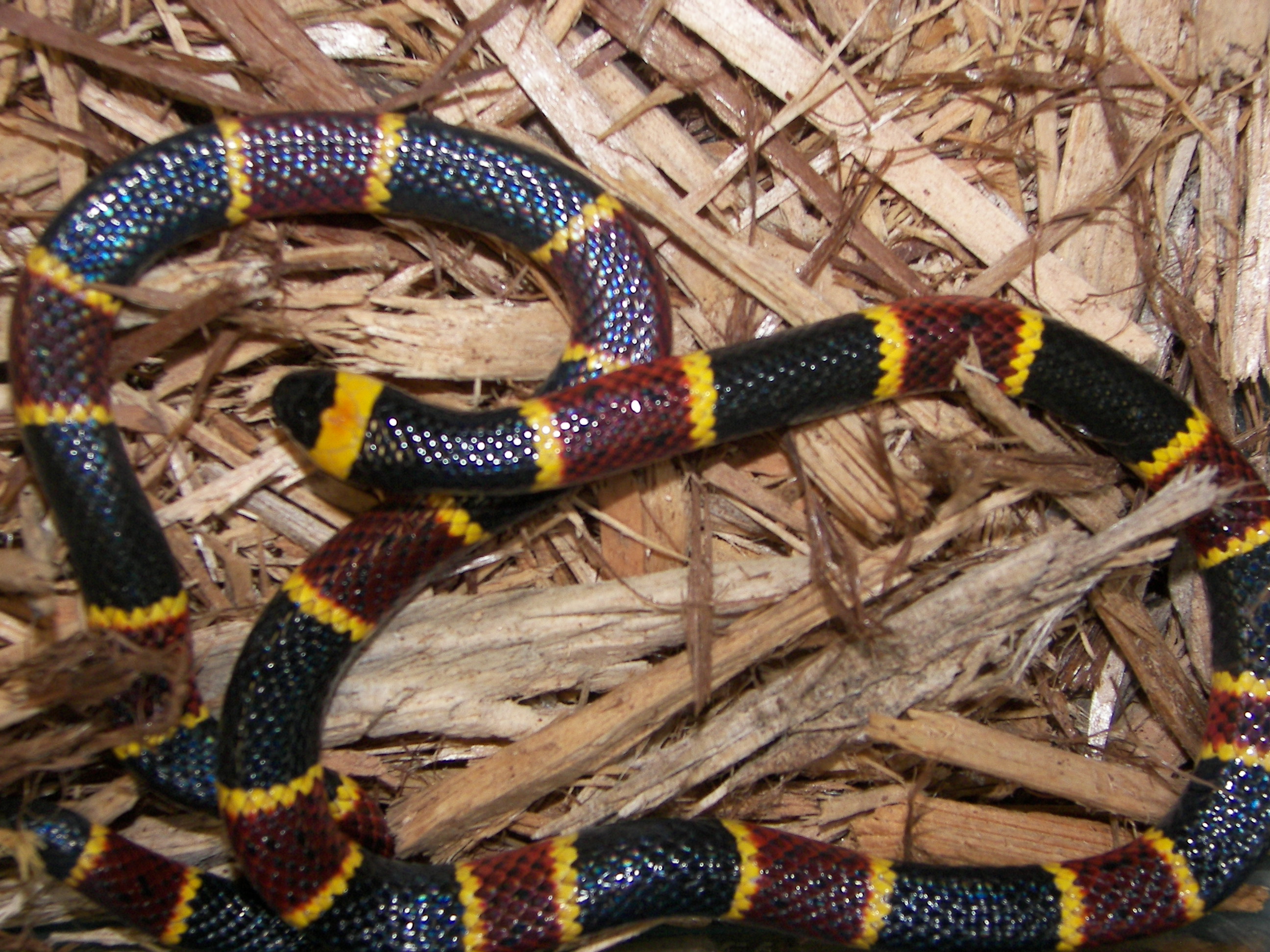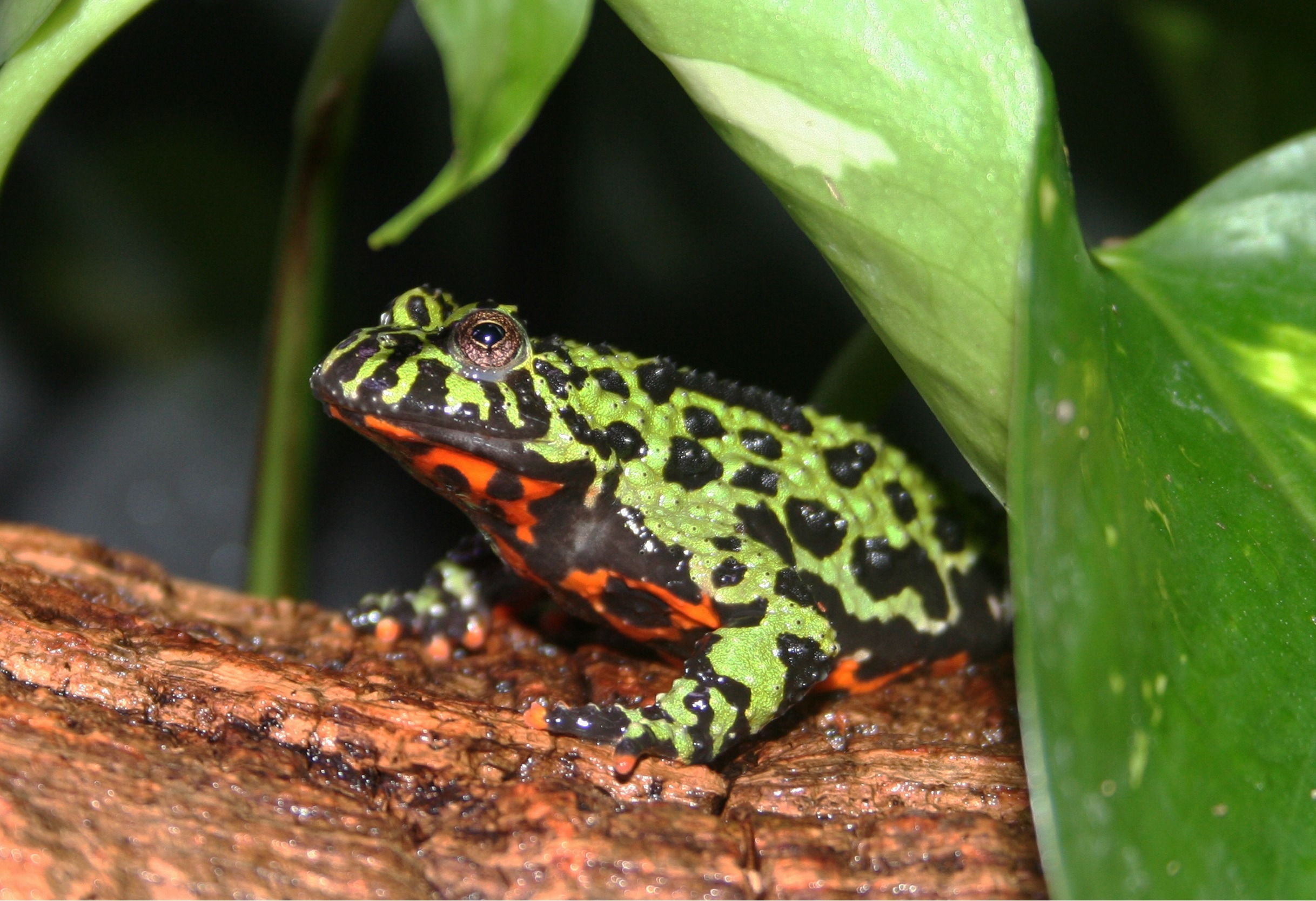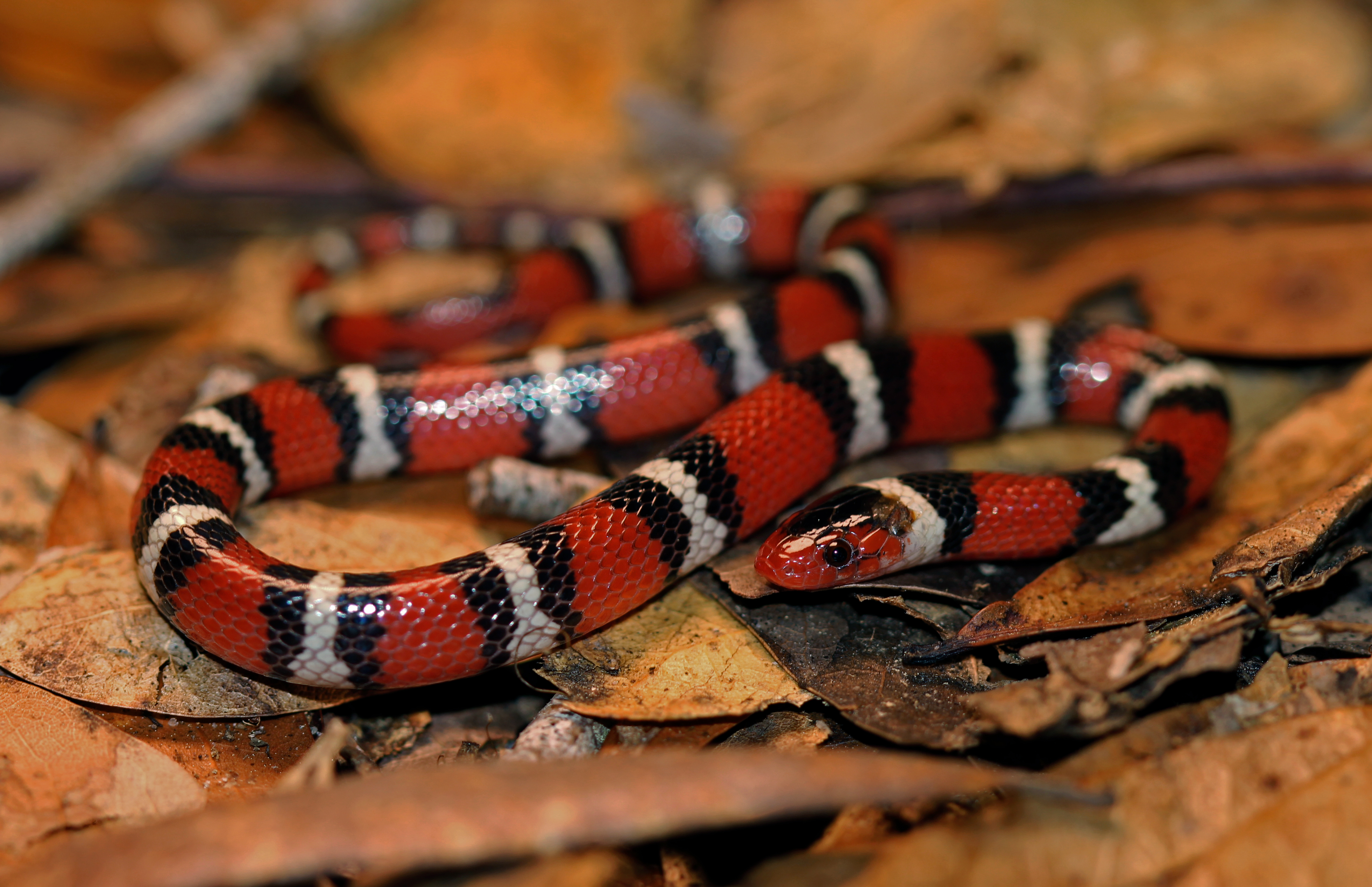
Credit: Holger Krisp, CC BY 3.0, via Wikimedia Commons
Background
Synopsis: Bright colors in animals, often linked to toxicity, evolved about 150 million years ago as a defense or mating strategy. These colors likely appeared before the toxins, reinforcing their warning function. Some toxic species lack bright colors but have other distinguishing traits, and many can't even see their own vivid hues.
- Many animals sport bright colors that contrast with their largely green and brown environment.
- The animals developed these colors for two reasons: to attract a mate, or to warn of toxicity. Using colors as a lethal warning is called aposematism.
- Both signals are seen in fish, amphibians, reptiles and even some mammals. However, warning coloration is about five times more common than sexual signaling.
- The most common colors that signal some chemical defense are red, yellow, black and white. Sometimes, all these colors are found on the same animal.
- Examples include black widow spiders, poison dart frogs, Eastern coral snakes and skunks.

An Eastern coral snake on a bed of mulch. It has a highly venomous bite.
Credit: John, CC BY 2.0, via Wikimedia Commons - Most predators see the coloration and immediately abandon chase or avoid attempting to consume the animal.
- Toxins are not only used by animals; humans use poison as well, as discussed in a previous episode, EarthDate episode 307, Don’t Pick Your Poison.
- These colorations are seen across the animal kingdom. But when did they first evolve?
- Colorful fruits appeared about 300 million years ago, and vivid flowers evolved around 200 million years ago.
- Eye-catching colors on animals is newer, about 150 million years old, and evolved independently in different species.
- Ray-finned fish were the first vibrant marine species, while lizards and birds led the way on land.
- An explosion of color followed in the next 100 million years, in three phases.
- Phase 1: The appearance of coloration.
- Scientists studied more than 1,100 species of frogs, newts and salamanders to understand how bright warning colors evolved.
- Amphibians fall into three categories:
- Brightly colored species, like poison dart frogs, that stand out
- Camouflaged species that blend in
- Hidden-signal species with dull tops but bright undersides, revealed only when threatened
- Research showed that most brightly colored species evolved from hidden-signal amphibians, not directly from camouflaged ones.
- This suggests that revealing warning colors only in certain situations helped species gradually evolve into fully conspicuous forms.
- However, not all toxic amphibians are brightly colored and many still rely on camouflage for survival.

A fire belly toad with its green and black back and red underbelly. It shows this underbelly when threatened and has a foul taste.
Credit: Laurent Lebois, CC BY 2.0, via Wikimedia Commons
- Phase 2: A chemical deterrent develops.
- This is usually a poison, venom or foul taste.
- Phase 3: The deterrent strengthens.
- As the chemical deterrent becomes more potent over generations, the animal’s colors become brighter and spread to more of its body.
- This suggests that the brightest animals may also be the most toxic.
- Phase 1: The appearance of coloration.
- Bright colors used for defense also pose a paradox; they also make the animal more visible to predators.
- Predators might consume the more brightly colorful individuals first, preventing those genes from being passed on.
- If the predator does eat the toxic animal, it may die before learning to associate bright colors with danger.
- However, some scientists propose that predators are instinctively cautious of conspicuous prey, or that they learn from each other what colors and species to avoid.
- Color vision and warning coloration evolved separately. Color vision appeared 100 million years before colorful plants, in both arthropods and vertebrates.
- Scientists don’t know exactly why color vision evolved, but some suggest it helped animals find food or nesting sites.
- Plants evolved color in fruits to attract fruit-eating animals that could then disperse seeds, and pollinators to aid in reproduction.
- Some animals that evolved bright coloration still lack color vision because only predators need to see these signals.
- Sexual signals are more complex because they must be perceived by members of the same species.
- Overall, scientists still have much to learn about color vision, how it evolved and why it differs among species. EarthDate episode 14, The Dawn of Vision explores this further.
- Not all colorful animals are dangerous, and not all dangerous animals are colorful.
- Many animals like iguanas use their colors exclusively to attract mates.
- Some non-toxic animals, like scarlet king snakes, mimic more dangerous species using bright colors. This type of mimicry is called Batesian mimicry.

A nonvenomous scarlet kingsnake, using its bright colors to mimic an Eastern coral snake.
Credit: Peter Paplanus, CC BY 2.0, via Wikimedia Commons - Toxic animals that share similar colorations to reinforce danger signals are part of Mullerian mimicry.
- Still, some of the most dangerous animals are not brightly colored at all. In fact, they are very well camouflaged.
- Examples include the venomous stonefish found in coastal regions of the Indo-Pacific, and the Western diamondback rattlesnake found in the Southwestern U.S. and Mexico.
- Fortunately, traits and behaviors beyond coloration can also signal danger.
- Many venomous snakes, like rattlesnakes, display aggressive behavior and have triangular heads, a visual cue to stay away.
- As a general rule, animals with quills, spikes or stingers are likely dangerous to humans.
Episode script
Animals evolved their colors to be sexy. But mostly, to be dangerous.
Amphibians, reptiles, fish, insects, birds and even mammals sometimes use bright colors to attract mates.
Think of the iridescent plumage of peacocks. Or the bright greens, yellows and oranges of a male iguana.
But animals are about five times as likely to use bold color—especially red, yellow, black and white—to warn predators that they’re poisonous, foul-smelling or bad tasting.
Think of the red hourglass on the black widow spider. Or the high contrast stripes on bees, wasps and skunks.
But bright colors also make them more visible to predators; so how did this trait develop?
Scientists looked at three coloration schemes across more than a thousand species, and found they fell into three groups:
Camouflaged. Brightly colored. And Hidden-signal—which flash colors only when threatened.
Their research suggests that some hidden-signal types developed chemical deterrents. Then, as generations passed, both their poison and coloration increased, spreading to other parts of the body until a brightly colored, highly venomous species emerged.
Still, many species remained camouflaged, but developed strong poisons. While others evolved to mimic the dangerous coloration of their peers, but remained harmless. It can be hard to know which is which.
So, if you ever see a brightly colored or a well-camouflaged wild animal, best to look but don’t touch.

